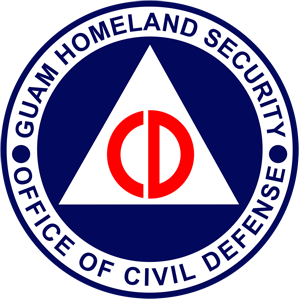The Federal Emergency Management Agency’s (FEMA) mission is helping people before, during and after disasters in ways that maximize the inclusion of, and accessibility for, people with disabilities.
FEMA provides federal, state, local, tribal, and territorial governments, the public sector and non-profit organizations with the tools, training, resources, and strategies necessary to help ensure that people with disabilities can participate in, and benefit from, programs and services during all phases of emergency management.
Let FEMA Know Your Needs:
Be sure to let FEMA know if you have an accessibility need. During the application process, applicants for FEMA disaster assistance have equal access to FEMA programs and services. Applicants with disabilities who need accommodation should inform FEMA.
A disaster can take away important items that enable people with disabilities to live independently or to communicate. These include a wheelchair, scooter, walker, CPAP machine, hearing aids, eyeglasses, screen reader or other assistive medical device. Let FEMA know if you have an accessibility need.
Applicants who go to a Disaster Recovery Center (DRC) will be able to meet with specialists who can help them apply for disaster assistance and provide other information. FEMA specialists use assistive technology to serve those who are Deaf or Hard of Hearing. Specialists can connect you with an American Sign Language (ASL) interpreter through Video Remote Interpreting (VRI) to help complete your disaster assistance application or schedule an appointment for an in-person ASL interpreter.
FEMA is also distributing written information in multiple languages so everyone affected by Typhoon Mawar knows of the assistance that is available to them. Additionally, translation services for Chuukese, Pohnpeian, Kosraean, and Yapese are being provided by the Micronesian Resource Center One-Stop Shop at the Dededo Sports Complex Disaster Recovery Center from 9 a.m. to 4 p.m. every day. For more information on their services, call 671-686-2227.
Typhoon survivors who speak other languages can also call the FEMA Helpline at 800-621-3362. There are multilingual operators available, simply press 2 for Spanish and 3 for other languages.
FEMA and the U.S. Territory of Guam also have interpreters skilled in American Sign Language (ASL) ready to assist when needed.
FEMA brochure: Help After a Disaster (published in 27 languages)
Go to YouTube: FEMA Accessible: Three Ways to Register for FEMA Disaster Assistance
For answers to other questions about FEMA disaster assistance, go here.
For information on Guam’s recovery, go here. Follow FEMA on Twitter and Facebook
Typhoon Mawar Disaster Debris Site Advisory – Dededo and Tiyan Experiencing HIGH VOLUME:
Typhoon Mawar disaster debris disposal sites at the former Tiyan carnival grounds in Barrigada and the former transfer station in Dededo are experiencing a high volume of disposal activity. Residents are urged to visit the disaster debris disposal site located at Ypao Point in Tamuning. At this time, Ypao Point in Tamuning is not experiencing high volume. High volumes of disposal at Tiyan and Dededo sites vary and will impact capacities to accept green waste and household trash.
As a reminder, residents are urged to take note of the following:
-
Beginning Monday, June 12, 2023, the following typhoon debris disposal sites effective hours of operation will be 9 a.m. - 6 p.m., seven days a week:
-
Dededo Transfer Station
-
Ypao Point, Tamuning
-
Former Tiyan Carnival Grounds in Barrigada
-
-
The DYA Cottage Homes site on Vicente Castro Street in Talofofo is only open for GREEN WASTE.
-
To ensure efficient flow at each typhoon debris disposal site, residents must PRE-SORT AND SEGREGATE waste prior to arrival at the typhoon debris disposal sites.
If any of the typhoon debris disposal sites lack the capacity to accept household trash, residents will be advised to visit the Guam Solid Waste Authority’s (GSWA) residential transfer stations. Residents will incur a fee for household trash disposal at GSWA’s transfer stations beginning June 12, 2023.
The typhoon disaster debris sites will accept the following waste types:
-
Metallic waste (i.e. ferrous, non-ferrous metals, cans, misc. loose metals and tin)
-
Construction debris (i.e. building materials, drywall, lumber, carpet, furniture, plumbing)
-
Household hazardous waste (i.e. Oil, batteries, pesticides, paint, cleaning supplies,
-
Green waste (i.e. vegetative debris, trees, grass clippings, branches, logs, leaves)
-
Damaged home furniture (i.e. carpet, beds, sofa, tables)
-
Damaged electronic and appliances (i.e. televisions, computers, refrigerators, washers, dryers, stoves)
-
Household trash
Guam EPA personnel will be on-site to inspect debris loads, and waste types not approved for disposal at these three sites will be rejected. The identification, transportation and disposal of household hazardous waste is made possible through the coordination of the Federal Emergency Management Agency and the U.S. Environmental Protection Agency.
Visit the following links for the latest information:
-
Governor’s Facebook: https://www.facebook.com/govlouguam
-
GHS/OCD Website: https://ghs.guam.gov/
-
GHS/OCD Facebook: https://www.facebook.com/GHSOCD/
For more information, contact the Joint Information Center at (671) 478-0208/09/10.







